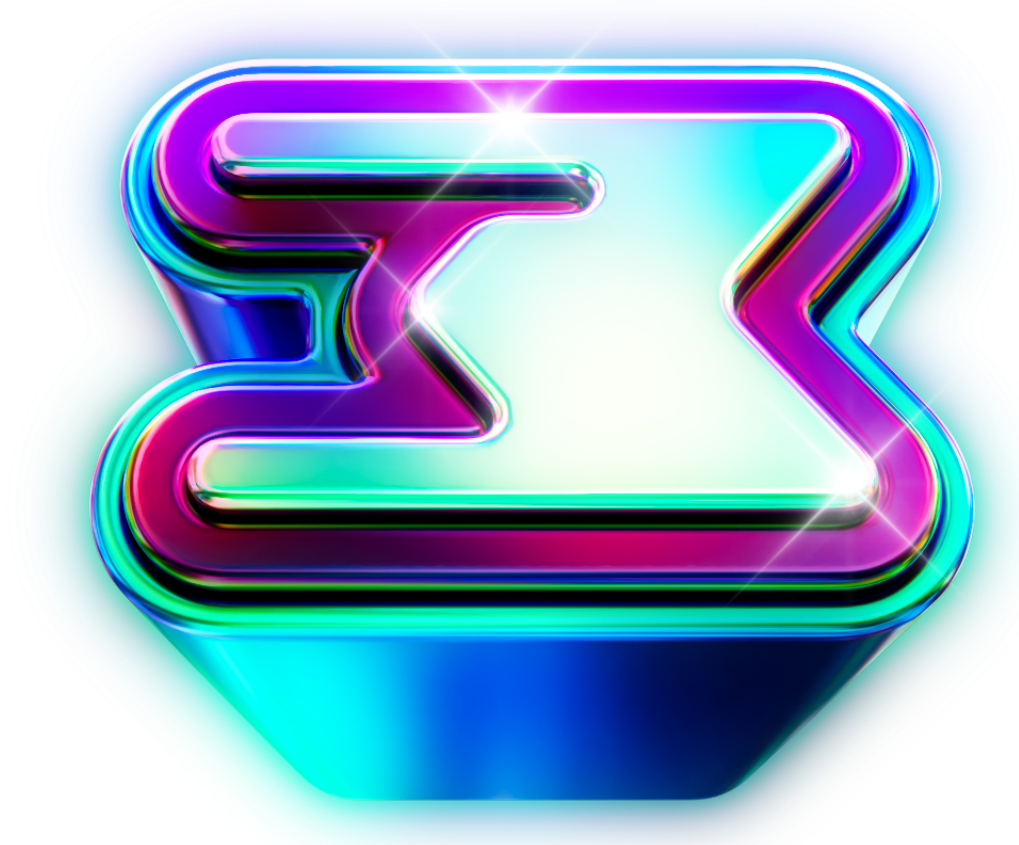Web3, also known as Web 3.0, is an evolving concept for a new iteration of the World Wide Web, characterized by decentralization, openness, and enhanced user empowerment.
It is envisioned as a more democratic and equitable online ecosystem, moving away from the current centralized model dominated by a few large tech companies.
Understanding the Evolution of the Web
To grasp the essence of Web3, it is crucial to understand the evolution of the internet.
Web 1.0, the first generation of the web, was primarily focused on providing static information access. It was a read-only web, where users could consume content but not actively participate in its creation or modification.
Web 2.0, the current generation, brought about a shift towards a more interactive and user-generated web. Platforms like social media, blogs, and wikis enabled users to create and share content, fostering a sense of community and engagement. However, this shift also led to increased centralization, as data and control became concentrated in the hands of a few tech giants like Google, Facebook, and Amazon.
Web3 aims to address these concerns by introducing a decentralized architecture, where data and applications are not controlled by a central authority but rather distributed across a network of computers. This decentralized approach promises greater transparency, security, and user control, empowering individuals to own and manage their own data.
Key Principles of Web3
Web3 is underpinned by several key principles that distinguish it from the previous web generations:
Decentralization:
Web3 dismantles the centralized structure of the current internet, where a handful of tech giants hold immense control over user data and online experiences. Instead, Web3 envisions a decentralized ecosystem, where power is distributed across a vast network of independent nodes. This network, powered by blockchain technology, ensures that no single entity can dictate the flow of information or manipulate user data.
The decentralized nature of Web3 offers several crucial benefits:
- Reduced Susceptibility to Censorship: Unlike centralized platforms, Web3 applications cannot be easily censored or manipulated by a single entity. This resistance to censorship fosters a more open and democratic internet, where content is free from undue influence.
- Enhanced Data Security: By distributing data across multiple nodes, Web3 significantly minimizes the risk of data breaches. Unauthorized access to user data becomes more challenging, as the data is not stored in a centralized location.
- Improved Resilience: Decentralization strengthens the overall resilience of the internet. If a node or server fails, the network remains functional, as data and applications are replicated across the network.
Openness:
Web3 embraces the principles of openness, ensuring that its architecture and development are accessible to all individuals and organizations. This openness fosters collaboration, innovation, and a more equitable distribution of power.
Openness in Web3 manifests in several ways:
- Open-Source Standards: Web3 applications are built upon open-source protocols and standards, allowing anyone to freely access, modify, and contribute to the code. This openness fosters innovation and creativity, as developers can build upon existing frameworks to create new and groundbreaking applications.
- Accessibility for All: The development and use of Web3 applications are not restricted by proprietary technologies or licensing agreements. Anyone with the necessary skills can participate in building and utilizing Web3 applications, empowering a broader community of users and developers.
- Transparency and Accountability: Open-source development promotes transparency and accountability, as the code is publicly accessible for scrutiny. This transparency helps to mitigate security risks and ensures that the development process is fair and equitable.
User Empowerment:
Web3 prioritizes user empowerment by placing the control and ownership of data and digital assets directly in the hands of users. This shift in ownership empowers individuals to manage their digital identities and assets as they see fit.
User empowerment is achieved through various mechanisms:
- Self-Sovereign Identity (SSI): Web3 utilizes SSI technologies, enabling users to create and manage their own digital identities without relying on third-party intermediaries. This control over identity information fosters greater privacy and agency in the digital world.
- Decentralized Finance (DeFi): Users can participate in DeFi applications to manage their finances directly, without intermediaries like banks or traditional financial institutions. This decentralized approach promotes financial inclusion and empowers individuals to take control of their financial decisions.
- Non-Fungible Tokens (NFTs): NFTs provide a mechanism for users to own and control unique digital assets, such as artwork, collectibles, or virtual items. This ownership empowers users to trade, sell, or utilize their NFTs as they wish
Benefits of Web3
The adoption of Web3 is expected to bring about a range of benefits, including:

Increased Security:
Decentralized networks, unlike centralized ones, do not rely on a single point of control. Instead, they distribute data and computing power across a vast network of nodes. This decentralization makes it significantly harder for attackers to target and compromise the entire network, as they would need to breach a majority of nodes simultaneously.
The distributed nature of Web3 also enhances data security by preventing data silos. In centralized systems, data is often stored in large databases that are more susceptible to data breaches. By distributing data across multiple nodes, Web3 mitigates this risk, as no single node holds a complete copy of user data.
Additionally, decentralized networks employ cryptographic techniques to safeguard data and transactions. These techniques, such as blockchain technology, ensure that data is tamper-proof and traceable, making it incredibly difficult for unauthorized parties to alter or steal user information.
Enhanced Privacy:
Web3 prioritizes user privacy by empowering individuals to control their personal data. Unlike centralized platforms that collect and monetize user data, Web3 applications allow users to decide how their data is used and who has access to it.
This enhanced privacy is enabled by the use of self-sovereign identity (SSI) technologies. SSI enables users to create and manage their own digital identities, independently of centralized intermediaries. This control over identity information ensures that users can selectively share their personal information with specific parties on their own terms.
Moreover, Web3 applications often implement data minimization practices, minimizing the collection of unnecessary personal information. This approach reduces the risk of data breaches and protects user privacy in the digital realm.
Greater Transparency:
Web3 promotes transparency by employing open protocols and standards. These open frameworks allow anyone to inspect and audit the code of decentralized applications, ensuring that the systems operate as designed and without any hidden backdoors or malicious code.
The open nature of Web3 also fosters transparency in decision-making. The governance of decentralized protocols is often handled by a community of stakeholders, who vote on proposals and changes to the system. This transparent governance process ensures that users have a say in how the network operates.
Moreover, the use of decentralized ledgers, such as blockchain technology, provides an immutable record of transactions and data. This transparency enables users to track the history of their interactions within the network, fostering trust and accountability.
Improved User Experience:
Decentralized applications can offer personalized and user-centric experiences by tailoring their functionality to individual preferences and needs. This customization is made possible by the data-driven nature of Web3.
By analyzing user data, decentralized applications can identify patterns and preferences, allowing them to provide tailored recommendations, content, and services. This personalized approach can enhance user engagement and satisfaction.
Moreover, decentralized applications can be designed to optimize user experience by removing intermediaries and unnecessary layers of complexity. This direct user interaction can simplify navigation and improve overall usability.
Empowerment of Creators:
Web3 fosters a creator economy where content creators can directly connect with their audience and monetize their work without intermediaries. This direct relationship empowers creators to retain ownership of their content and receive fair compensation for their efforts.
Decentralized marketplaces, such as NFT platforms, enable creators to sell their digital creations directly to their fans. This eliminates the need for traditional intermediaries like auction houses or social media platforms, who often take a significant cut of the profits.
Additionally, Web3 applications can provide creators with tools to manage their finances, engage with their audience, and build a community around their work. These tools empower creators to take control of their online presence and build sustainable careers.
Challenges of Web3 Adoption
Despite its potential benefits, Web3 faces several challenges that need to be addressed before widespread adoption:
Scalability: Decentralized networks can face scalability issues when handling large volumes of data and transactions.
Interoperability: Different Web3 platforms and protocols need to be interoperable to enable seamless communication and data exchange.
User Adoption: Educating users about Web3 concepts and providing user-friendly interfaces is crucial for widespread adoption.
Regulatory Framework: Clear and comprehensive regulations are needed to address potential legal and financial issues arising from Web3 technologies.
The Future of Web3
Web3 is still in its early stages of development, but it holds immense potential to revolutionize the way we interact with the internet. As the technology matures and challenges are addressed, Web3 is poised to play a significant role in shaping the future of the digital world.
In conclusion, Web3 represents a promising vision for a more decentralized, open, and empowering internet. While it faces challenges, the potential benefits of Web3 are worth pursuing, as it offers an opportunity to create a more equitable and user-centric online ecosystem.






